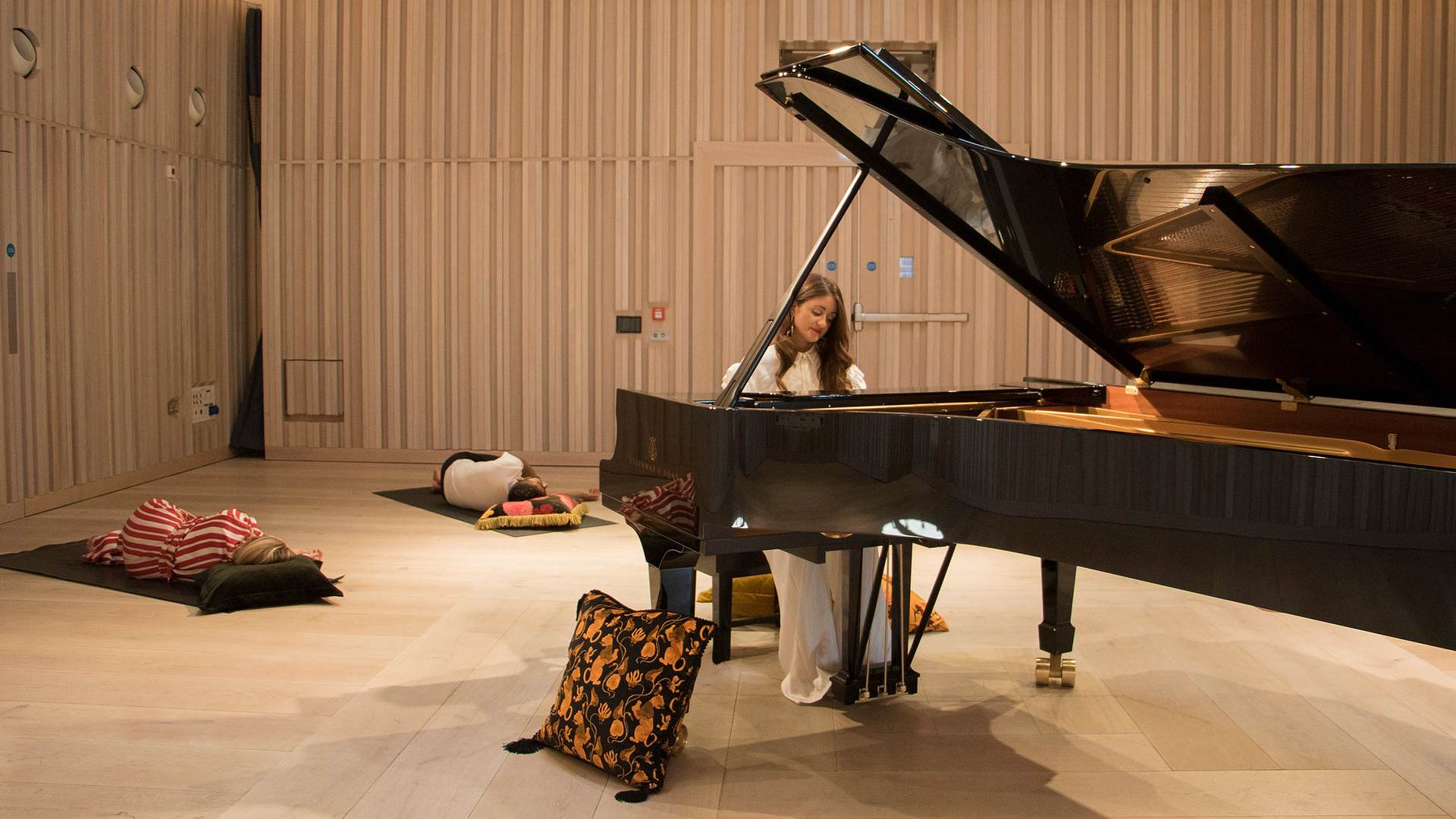What position do you prefer to be in when listening to music – seated, standing or otherwise? (Keep it clean.)
Generations grew up listening to records lying on their bedroom floors or pottering about twiddling radio knobs in sheds, while the rise of smartphones and streaming has made it easy to listen on the move. With virtually any sound available at the click of a button (or tap of a screen), live music from dedicated performance spaces is increasingly special: an opportunity to ignore the chaos of our lives and concentrate only on the notes.
But concert halls are not widely praised for their comfortable seating (I’m looking at you, Snape Maltings – there’s a reason audience members bring their own cushions) and not everyone is physically able to sit in the same position for hours on end. Yet, somehow, we’ve ended up with a situation where, with a few exceptions such as the BBC Relaxed Prom, among others – this is the accepted arrangement for classical music.
Christina McMaster has long suspected there is a better way for audiences to be part of a performance. Over the past year, the pianist has worked with the Cultural Institute at King’s College London to pioneer a type of concert that is intended to open all our senses to better engage with the music – and, in return, improve wellbeing.
Combining simple restorative yoga poses with meditation, and inviting the audience to listen while lying down has been proven to help audiences connect with both the music and their surroundings in that moment (a key principle to mindfulness, a popular tool for cultivating better mental health). McMaster has since launched Lie Down and Listen; a series of concerts featuring basic meditation and piano music selected to settle the synapses.
McMaster takes inspiration from the psychedelic New York loft concerts of the 1960s, where audiences took hallucinogenics
I’ve just about got used to watching real-time performances from my sofa, but listening from my bed was strange at first. For a start, when laid down, I couldn’t see McMaster at the piano – this automatically forces concentration on sound (Debussy Preludes from Book 1) and touch (cosy bed with dog). McMaster takes inspiration from the psychedelic New York loft concerts of the 1960s, where audiences, laid out on cushions, took hallucinogenics while listening to hypnotic minimalist music by the likes of Terry Riley.









